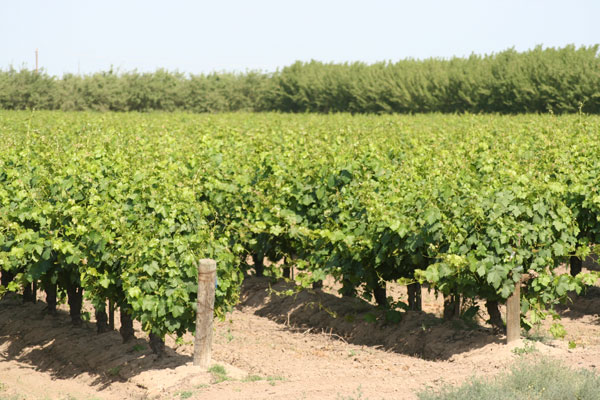
Nab weed escapees with dormant season vineyard survey
As part of an overall vineyard management system, your ability to control weeds can affect the risks to your crop posed by other threats, such as insects, mites, nematodes and diseases, say University of California Cooperative Extension specialists.

By reducing competition for water, nutrients and sunlight, effective weed control enhances the establishment of newly planted vines and improves the growth and yield of established vines.
As part of an overall vineyard management system, your ability to control weeds can affect the risks to your crop posed by other threats, such as insects, mites, nematodes and diseases, say University of California Cooperative Extension specialists.
Because weeds can vary from year to year, even within a vineyard, they recommend surveying your fields for weeds during dormancy to identify any species that escaped control from earlier management practices.
The perennial weeds may include bermudagrass, yellow nutsedge and field bindweed. Among the winter annuals that may be present are annual bluegrass, common chickweed, common groundsel, little mallow, shepherd's purse, prickly lettuce, swinecress and henbit. Photos and descriptions of these weeds are available on the UC IPM Online website – www.ipm.ucdavis.edu – in the Year-Round IPM Program section for grapes.
The Extension specialists also advise surveying your fields, again, at least once in late spring or early summer after summer annuals have germinated to determine the spectrum of weeds present then.
The results can help you make the best weed management decisions. For example, if herbicides were used, surveying identifies any need for changing to another herbicide. Weed surveys also help in selecting herbicides or cultivation equipment and practices.
Surveying tips
If you use cultivation for weed control, monitor your fields at least two weeks before you plan to cultivate.
Pay particular attention to perennials. Check for re-growth of perennials a few weeks after cultivation.
Check any wet spots which can encourage weed growth.
Check around the vineyards, as well. These areas could be a potential source for wind disseminated weed seeds such as marestail and fleabane.
Keep records of your surveys so you can track weed population information from year to year to better understand ongoing weed control problems such as resistance.
The Extension specialists suggest including a sketch of the vineyard, showing areas where perennials are found. Also, rate weed infestations within the rows and in the row middles using a numeric scale from 1 to 5 (1 being the lightest) or describing any weed growth as “light,” “medium,” or “heavy.”
Information collected over a period of years tells you how weed populations may be changing and how effective your management operations have been and help you make any needed adjustments to your weed control program.
About the Author(s)
You May Also Like



